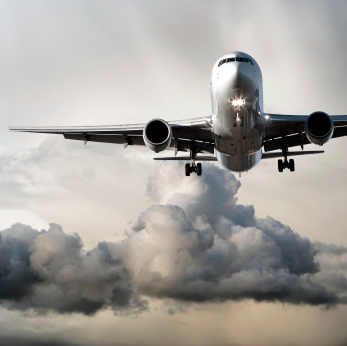
A much-needed element of certainty has been injected in the contentious legal wrangling between the Department of Justice and would-be merger partners, American and US Airways.
The judge who will oversee the trial adjudicating the DOJ suit to halt the American-US Airways merger has set a tentative start date for the proceedings of November 25.
Referring to the DOJ’s proposal that the trial begin in March 2014, Judge Colleen Kollar-Kotelly said, “March 3, I think, is too far off. It needs to be a tighter, expedited schedule.” Her decision and implied reasoning validate the arguments of the American-US Airways legal team, which had pushed for a November 12 start date.
In response to the ruling, American issued the following statement: “We are confident in our case and eager to get to Court. We are pleased to have a trial date that will enable us to resolve this litigation in a reasonable timeframe. We want the opportunity to compete together to enhance competition with the largest airlines in the U.S.—United, Delta and Southwest—and a number of fast-growing low-cost carriers. We look forward to making the case for the new American Airlines beginning on November 25.”
There remains the possibility that the two sides will settle before the trial begins, with American and US Airways agreeing to shed landing slots at Washington’s Ronald Reagan Airport, for example, in order to mollify the DOJ’s anti-competitive concerns. But there’s a credible school of thought that holds that the DOJ’s complaint is truly intended to block the transaction, not just to squeeze concessions from the airlines.
The outcome of this dispute will affect the airline industry for years to come. A trial, in which the DOJ makes the case that consolidation is not in the best interests of the traveling public, is a must.
November 25 is on my calendar, highlighted.
Merger Cheat Sheet
- The new company would retain the “American Airlines” name and be based at American’s Ft. Worth headquarters.
- US Airways chief Doug Parker will be the new CEO. American chief Tom Horton will be named chairman of the new board and remain in that position until the spring of 2014 when the company’s first annual shareholder meeting will be held. When Horton departs the board, Parker will assume his position as chairman.
- American’s creditors would own around 72 percent of the new company; US Airways shareholders would get the rest.
- Based on 2012 results, the new company would have generated $38.7 billion in revenue.
- The merger is expected to generate around $1 billion in combined extra revenue and cost savings for the new company.
- The new company will be valued at around $11 billion.
- Combining the third- and fifth-largest U.S. carriers will create the world’s largest airline, in terms of passenger traffic.
- Prior to any post-merger rationalization, the two airlines will have around 120,000 employees, 950 planes, 6,500 daily flights, and eight major hubs (American: Dallas, Miami, Chicago, Los Angeles, New York; US Airways: Phoenix, Philadelphia, Charlotte). Although the carriers promise to maintain all current hubs, Phoenix and Philadelphia are likely to be downsized in the post-merger “rationalization.”
- The new American will be a member of the oneworld alliance, not the Star Alliance.
- The merger is subject to review and approval by U.S. regulators. That wasn’t expected to be a problem since there is relatively little overlap between the two airlines’ networks.
- The actual merger won’t happen overnight. United and Delta required five and seven months respectively to secure the necessary approvals for their mergers.
- It was 22 months after their merger closed before United and Continental finally merged their frequent flyer programs. Expect a similar post-close interval before American and US Airways consolidate their programs.
- Comparisons between American and US Airways’ current mileage programs are probably moot since there’s a high likelihood that an entirely new revenue-based program (like Southwest’s) will be introduced to replace both programs.
- After the merger, 83 percent of U.S. domestic air traffic will be in the hands of just four airlines (American 26 percent, United 19.3 percent, Delta 19.2 percent, Southwest 17.3 percent).
This article originally appeared on FrequentFlier.com.
You Might Also Like:
We hand-pick everything we recommend and select items through testing and reviews. Some products are sent to us free of charge with no incentive to offer a favorable review. We offer our unbiased opinions and do not accept compensation to review products. All items are in stock and prices are accurate at the time of publication. If you buy something through our links, we may earn a commission.
Related
Top Fares From
Today's Top Travel Deals
Brought to you by ShermansTravel
France: 8-Night Paris, Avignon & Nice...
Infinity Worldwide Vacations
 vacation
$2880+
vacation
$2880+
Poconos: 3 Nts in Garden of...
ResortsAndLodges.com
 hotel
$305+
hotel
$305+
7-Nt Canada & New England Cruise,...
Princess Cruises
 cruise
$839+
cruise
$839+



